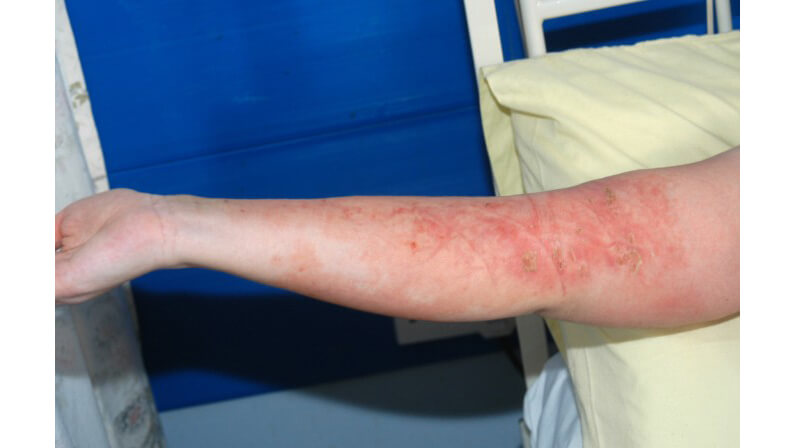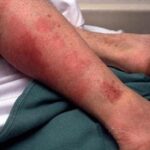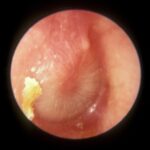Streptococcal toxic shock syndrome (STSS) is a rare yet rapidly progressive and life-threatening illness caused by Group A Streptococcus (GAS), particularly Streptococcus pyogenes. Characterized by sudden-onset shock and multiorgan failure, STSS often follows soft tissue infections but can also emerge without an identifiable focus. Mortality rates can exceed 40% without immediate, aggressive medical intervention.

Pathogenesis: How Streptococcal Toxins Trigger Systemic Collapse
STSS is fundamentally a toxin-mediated disease. Specific GAS strains produce superantigens—such as streptococcal pyrogenic exotoxins (SpeA, SpeC)—which hyperstimulate T cells, leading to a cytokine storm. This cascade results in widespread capillary leakage, tissue hypoperfusion, and organ dysfunction.
Risk Factors and Epidemiology
While STSS can affect healthy individuals, certain populations are at elevated risk:
- Postpartum women
- Immunocompromised patients
- Individuals with varicella or skin trauma
- Patients with recent surgery or invasive procedures
- Elderly and diabetic individuals
Though relatively rare, the incidence of STSS has increased in correlation with rising cases of invasive GAS infections globally.
Clinical Manifestations: Early Signs and Progression
STSS typically develops rapidly and follows a biphasic presentation:
Initial Phase:
- Fever ≥ 38.9°C (102°F)
- Severe localized pain, often out of proportion to physical findings
- Flu-like symptoms: myalgia, chills, malaise
- Erythema and swelling at infection site
Fulminant Phase:
- Hypotension unresponsive to fluids
- Renal impairment (elevated creatinine)
- Coagulopathy (thrombocytopenia, DIC)
- Liver dysfunction
- Acute respiratory distress syndrome (ARDS)
- Rash (diffuse macular erythroderma)
- Desquamation (in late phase, especially palms/soles)
The hallmark of STSS is rapid progression to shock and organ failure within hours of initial symptoms.
Diagnostic Criteria for Streptococcal Toxic Shock Syndrome
The Centers for Disease Control and Prevention (CDC) established formal criteria for diagnosing STSS:
Confirmed STSS Requires:
- Isolation of Group A Streptococcus from a sterile site (e.g., blood, cerebrospinal fluid, deep tissue)
- Hypotension (systolic BP ≤ 90 mmHg)
- At least two of the following:
- Renal impairment (creatinine ≥ 2 mg/dL)
- Coagulopathy (platelets < 100,000/mm³, INR > 2)
- Liver involvement (AST, ALT, bilirubin ≥ 2× normal)
- ARDS (PaO₂/FiO₂ < 200)
- Generalized erythematous rash with desquamation
- Soft-tissue necrosis (necrotizing fasciitis, myositis, gangrene)
Laboratory and Imaging Workup
Blood and Tissue Analysis:
- Blood cultures: Confirm GAS presence
- Throat/wound swabs: Secondary source identification
- CBC, metabolic panel: Monitor renal/liver dysfunction, coagulopathy
- Lactate levels: Assess perfusion status
Imaging:
- CT/MRI: Identify deep tissue infections (e.g., necrotizing fasciitis)
- Echocardiography: Rule out endocarditis if bacteremia present
Rapid detection and source control are paramount for survival.
Treatment and Management Strategies
Immediate Resuscitative Measures
- Aggressive IV fluid resuscitation: Minimum 30 mL/kg within first hour
- Vasopressors: Norepinephrine preferred if hypotension persists
- ICU admission for organ support and monitoring
Antimicrobial Therapy
Empiric antibiotics should begin immediately:
- High-dose Penicillin G: Targets GAS cell wall
- Clindamycin: Inhibits protein synthesis, suppresses toxin production
(Clindamycin remains effective even in high bacterial loads or stationary-phase organisms)
In penicillin-allergic patients:
- Vancomycin or Linezolid may be considered
Source Control
- Surgical debridement: Crucial for necrotizing fasciitis or abscesses
- Amputation in severe soft tissue necrosis to prevent systemic spread
Adjunctive Therapies
- Intravenous Immunoglobulin (IVIG): Neutralizes superantigens and modulates immune response
(Dosage: 1–2 g/kg divided over 1–2 days) - Corticosteroids: Experimental; may reduce inflammation but require cautious use
- Renal replacement therapy or mechanical ventilation: If indicated by organ failure
Prognosis and Mortality
Despite modern intensive care, mortality rates remain high (30–70%) due to the abrupt onset and severity of organ failure. Poor prognostic indicators include:
- Delayed surgical intervention
- Advanced age
- Renal or hepatic failure at presentation
- Bacteremia without identifiable source
- Underlying immunosuppression
Early recognition, prompt antibiotic therapy, and surgical debridement are essential to improve outcomes.
Prevention and Surveillance
Infection Control Measures
- Proper wound care and hygiene
- Prompt treatment of GAS pharyngitis and skin infections
- Isolation of infected patients in hospital settings
- Hand hygiene and barrier precautions
Prophylaxis in Close Contacts
- Penicillin V or clindamycin may be prescribed for household contacts in severe invasive GAS cases
Public Health Surveillance
- Mandatory reporting of STSS to health departments for outbreak monitoring and response
- Genetic typing and tracking of virulent GAS strains
Streptococcal toxic shock syndrome is an acute medical emergency characterized by rapid deterioration, circulatory collapse, and multiorgan failure. It is driven by potent bacterial toxins and requires a multifaceted treatment approach that includes early antibiotic therapy, critical care support, and aggressive surgical management. Clinicians must maintain a high index of suspicion, particularly in patients with skin or soft tissue infections accompanied by shock symptoms. Timely diagnosis and intervention remain the linchpins in reducing the fatality of this highly aggressive syndrome.

